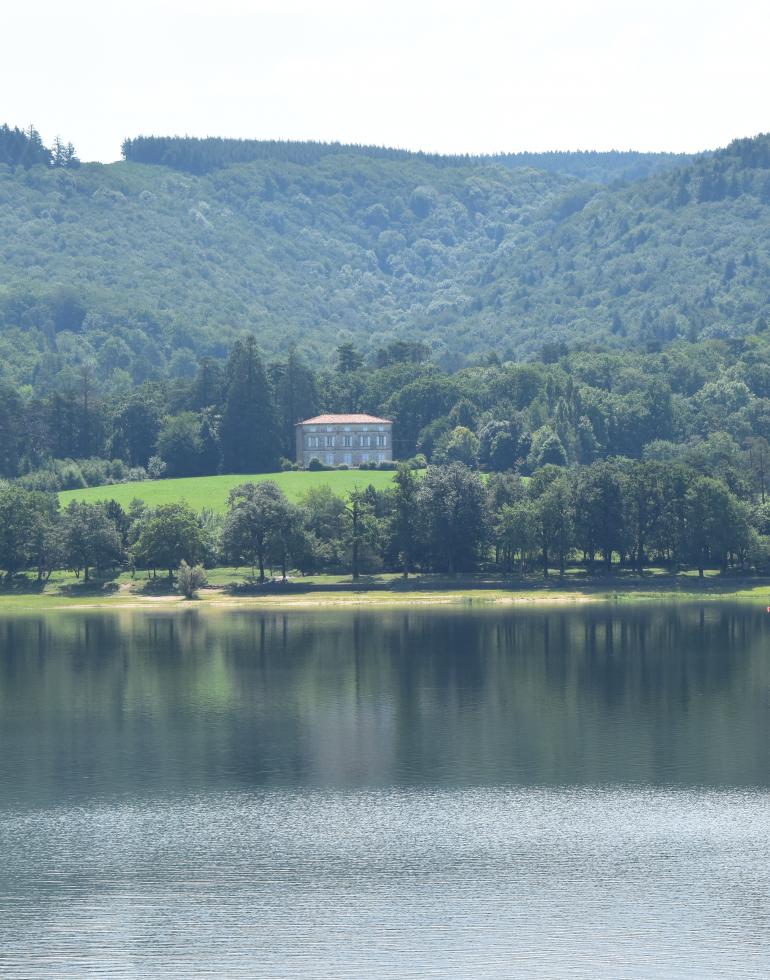Heritage and history
The royal bastide of Revel
Revel was founded by King Philippe VI in 1342. The streets of the bastide are laid out in a grid around the central market square. Colourful arcades of brick, wood and stone surround this square on all four sides. Together they provide the perfect setting for a splendid medieval market hall which graces the centre of the town.
The 14th century market hall is one of the largest in France measuring thirty-nine metres along each side. The roof is supported by seventy-nine oak pillars. This is the town’s heart, particularly on a Saturday morning when it hosts one of the hundred most beautiful markets in France.
Cabinetmaking and marquetry
In Revel, the art of cabinetmaking has been passed down from generation to generation. Starting with Alexandre Monoury in 1888, the town has been home to numerous cabinetmakers who built high quality furniture in a wide range of styles including Louis XV, art deco, contemporary…in the field of craftsmanship, Revel has been nationally recognised as a town with a great pool of talent.
A heritage that reflects its history
A wealth of architecture styles
The bastide of Revel has been graced by a wide range of architectural styles during the course of its long history. Today you can see half-timbered houses and corbelled houses from the 15th and 16th centuries, or private mansions from the 18th century, a neo-byzantine church, and the art deco public baths.
Revel’s neo-classical bell tower dates from 1834 and the bell still chimes the hour. Until 1965, the building was also home to the policeman and the town crier. The previous bell tower made of brick and timber burned down in 1829. Its many functions included serving as the town jail.
The church of Notre-Dame des Grâces was built in 1350 shortly after the construction of the town walls. It was destroyed several times during the Wars of Religion that plagued France in the 16th and 17th centuries. In the 19th century the church was reconstructed in the neo-byzantine style with a parquet floor of solid oak.
In the Rue des Escoussières you will find a large building that was once the Get distillery where a peppermint-based liqueur was made. It was exported to five continents under the name Pippermint Get, and is still made today under the name Get 27.
An outing to Revel's market
Don’t miss Revel’s wonderful weekly market! It takes place every Saturday morning and is an ideal place to buy delicious local products and produce. Only the producers themselves are allowed to set up their stalls beneath the market hall.
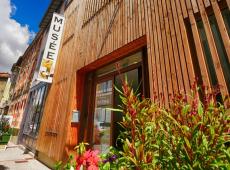
01
The Museum of wood and Marquetry
Expertise and craftsmanship
From the lif of a tree to marquetry, discover the techniques that bring out the innate beauty of wood.
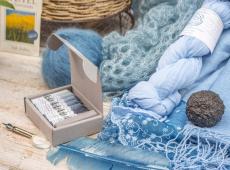
02
Carré Bleu de Pastel, en Pays de Cocagne
Life in blue
In its workshop, Carré Bleu dyes textiles using the natural dye extracted from woad plant.
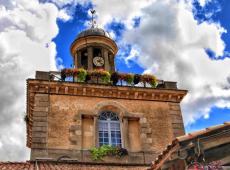
03
Revel bell tower, a terrace overlooking the town
Breathtaking view
Don’t miss the chance to visit the top of the bell tower and enjoy a panoramic view of the town and the Montagne Noire!
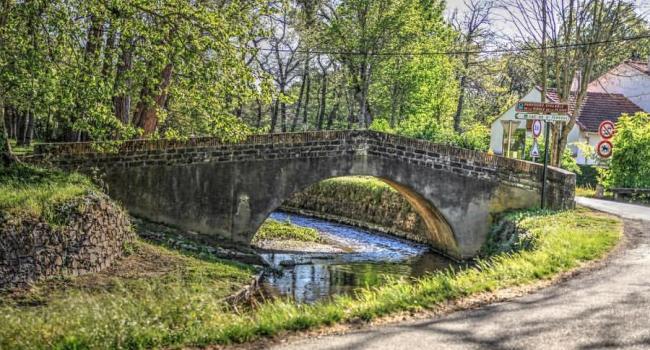
Riquet's water network
Riquet moved into a house on the main square in 1648, and it was from there that he explored the Montagne Noire and the plains of the Lauragais in his quest to design an innovative network of dams and water channels to supply the Canal du Midi.
The Rigole de la Plaine
A water channel built by Revel’s first town councillors in the 14th century draws water from the river Sor and brings it to the town. Riquet extended this channel by thirty-five kilometres all the way to the highest point of the Canal du Midi at the Seuil de Naurouze. In this way, the waters of the Montagne Noire supply what was originally called the Royal Canal of the Languedoc.
Known as the Rigole de la Plaine, this water channel winds its way through the Lauragais. From Revel, you can follow its tree-lined towpath for fourteen kilometres, ideal for a shady walk or bike ride
Revel bell tower
This municipal tower stands atop Revel from the top of its 30 m high. Bearing the clocks and the bells of the town, it sets the rhythm to Revel population throughout the day.
The Tourist Office invites you to discover the history of the town through the Belfry every Saturday morning. The view extends from the Montage Noire to the Lauragais hills and the tile roofs of Revel.
Revel cabinetmaking
Since the settling of Alexandre Monoury in 1888, a cabinetmaker from Versailles, this craft has become a success story in Revel. The town became the French capital of the cabinetmaking in the 20th century with 140 workshops employing 700 people in the 1930s.
The Ebénistes et Créateurs showroom presents the production of stylish furniture or contemporary furniture by Revel cabinetmakers. The Professionnal Highschool of Wood and Cabinetmaking trains young people from all over France: marquetry, woodturning, upholstery...
Rigole de la Plaine
The Rigole de la Plaine is part of the network listed as a World Heritage Site by the UNESCO in 1996. It is punctuated by engineering structures. The towpath welcomes cyclists, joggers, pedestrians and pilgrims to Santiago de Compostela on the GR 653.
It is possible to go down to the Lake of Lenclas and even reach the Canal du Midi on a path. The bicycle path allows you to climb up to the Lake of Saint-Ferréol in complete safety on a path dedicated to cyclists.
Revel today
Revel is the economic lung of a living area of 20,000 inhabitants. There are many retail businesses. The agri-food industry contributes to this vitality with companies such as Nutrition et Santé (Gerblé).
The foundation of the town took place on June 8, 1342. On that day, we proceeded with the "planté de pal". It is a tree trunk from the cleared forest that was planted in the ground of the future town.
Then, the map of the city was drawn up thanks to a chalk line. First the streets measuring the same width according to a checkerboard pattern and then plots measuring the same surface.
Revel is a rich agricultural town thanks to the fertile soil of the Lauragais. Tannery and pottery activities are practiced. During the Renaissance, the pastel culture brought prosperity to the town.
A bit of history
From the 18th century, Revel became a city of spinning and silk making with 200 looms. The invention of a mint syrup in 1796 made Revel a distillery town with the Get Frères distillery.
Revel, which became a city of cabinetmaking in the 20th century, has always remained a dynamic city in its time. This is why Revel has a diversified heritage marked by the patina of its history.
